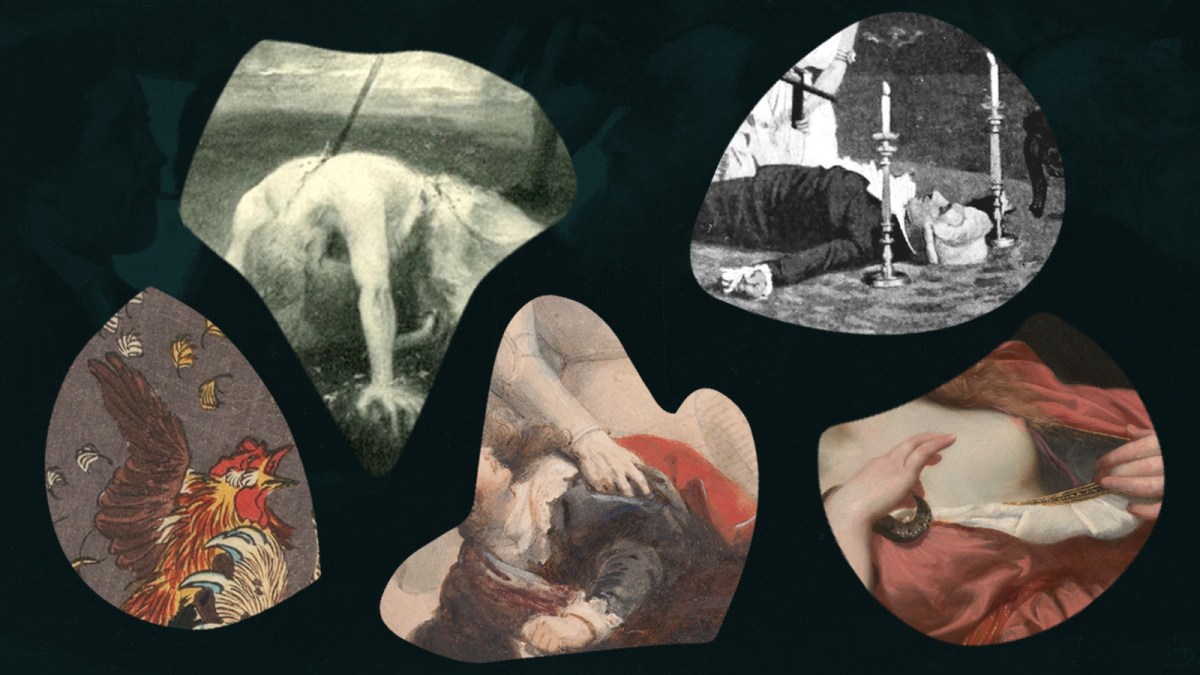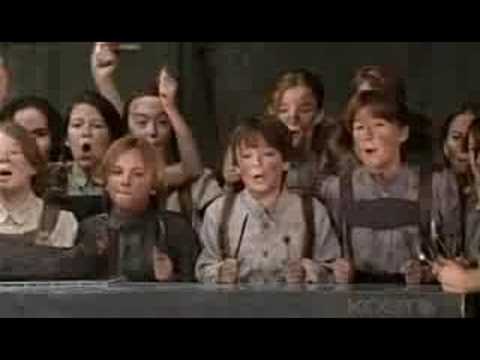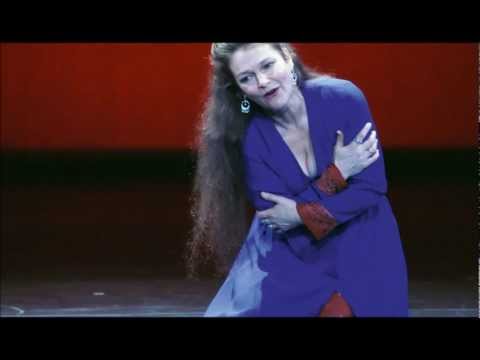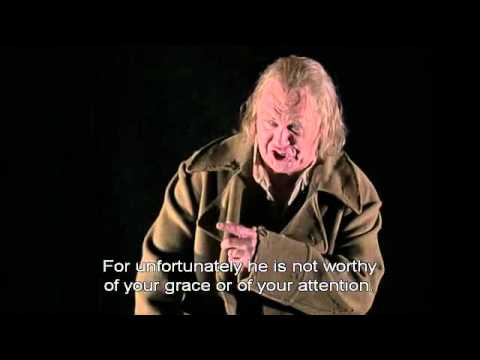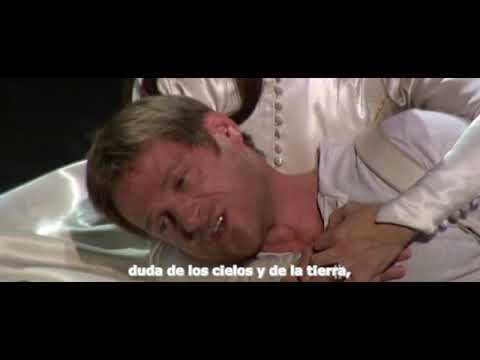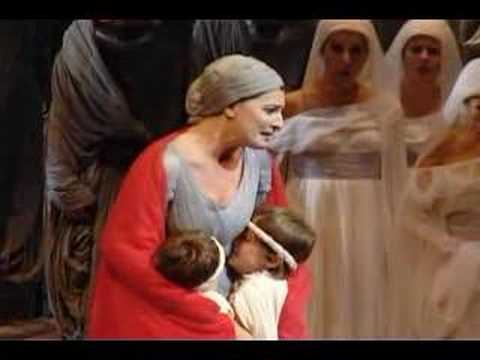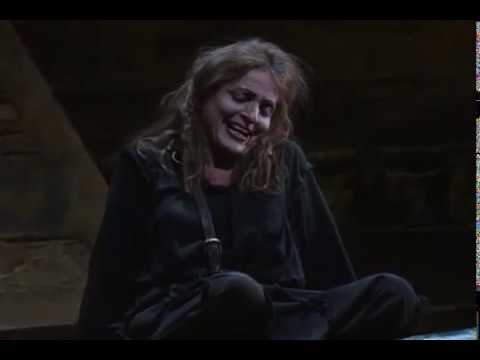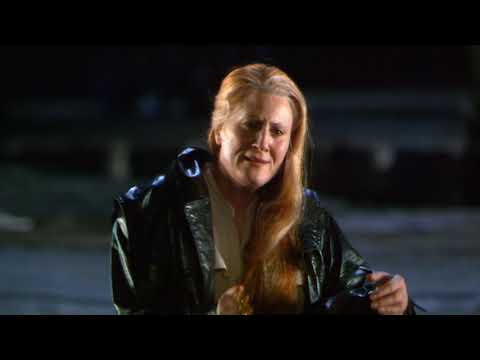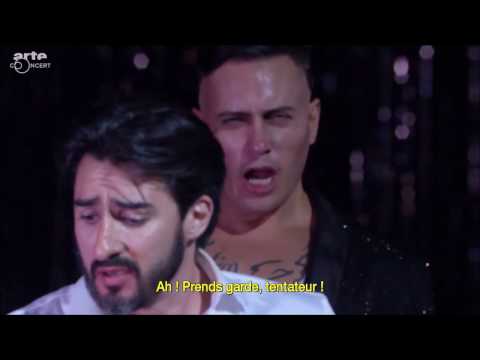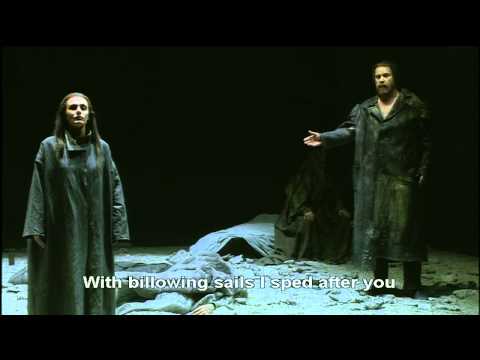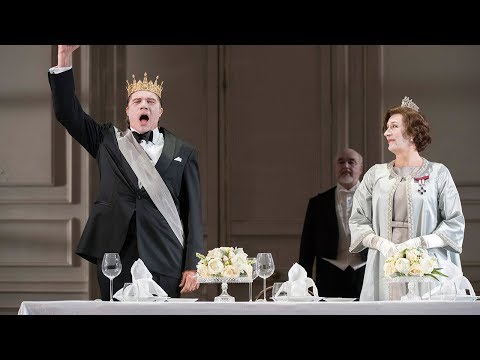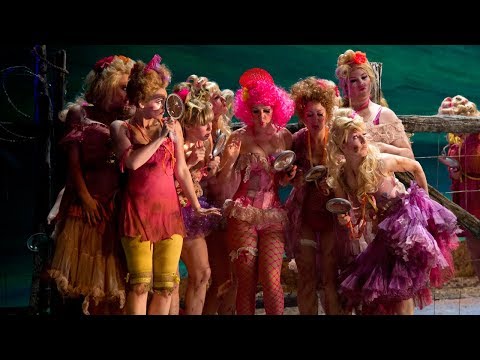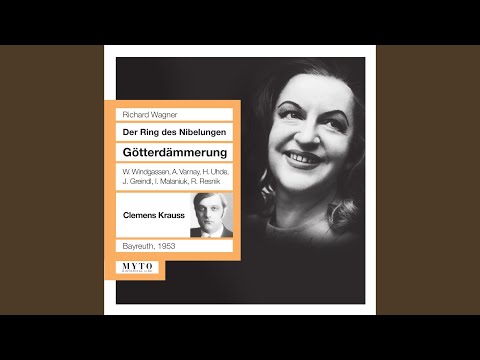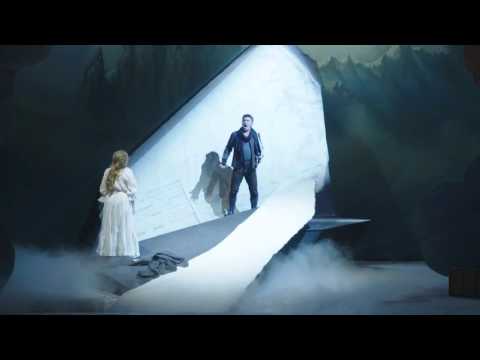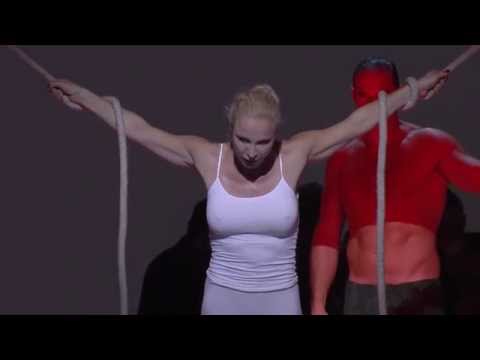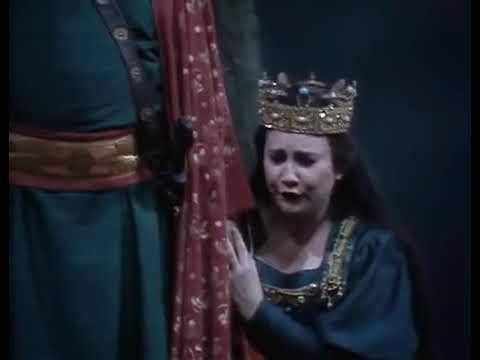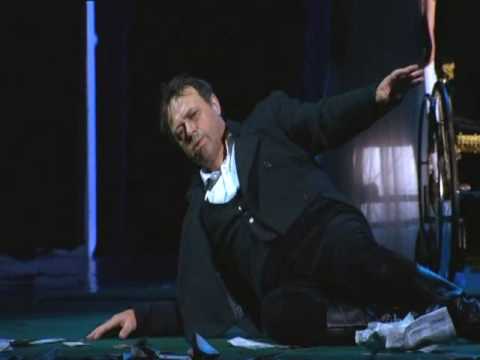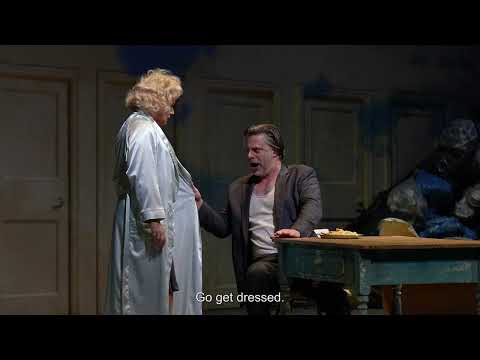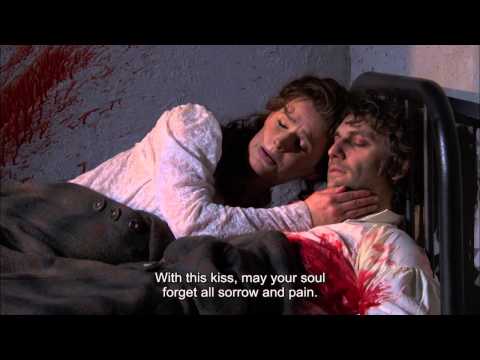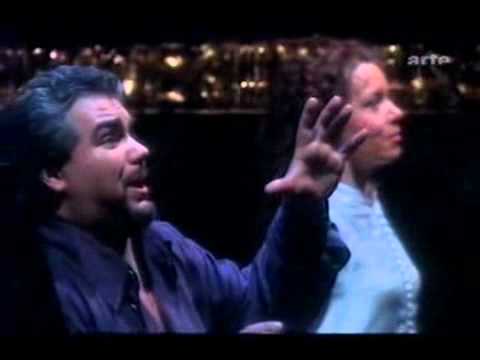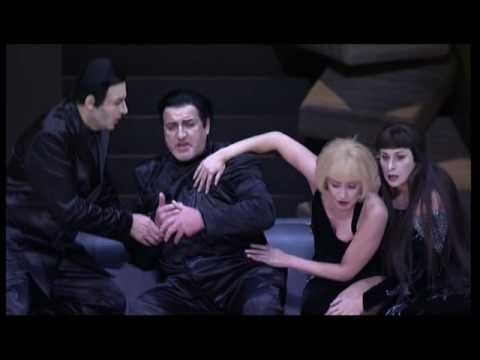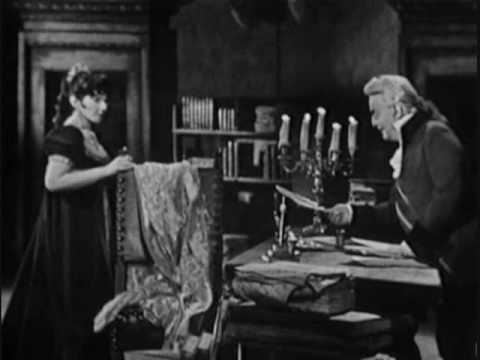There are countless rankings of the best deaths in opera that grade by the most memorable (“La Bohème,” “La Traviata”), the most epic (“Dialogues of the Carmelites,” “Götterdämmerung”), and the most difficult to stage (“La Wally,” “La Juive”). All of those criteria are well and good, but what I want—what I really, really want—in an operatic death is catharsis for the rage that is knotted around my psyche at all times, like an overgrown philodendron. I want justifiable homicide. I want to be able to say, “It couldn’t have happened to a nicer guy.” I want bastards to understand—just once!—what it’s like to be held accountable for their actions. I don’t want “Good Deaths,” I want good deaths.
All of which has led to my scientific survey and ranking of the actual best deaths in opera: the most deserved, the most satisfying, the most defensible. For this highly objective ranking, I considered the following:
1. What did they do to deserve death?
2. How well is the death handled in the opera’s libretto and score?
3. How objectively satisfying is it to watch said character meet their fate?
A special thanks to Opera Twitter for sharing their own thoughts on this topic, some of which are quoted below.
32. The Gingerbread Witch (“Hansel und Gretel,” Engelbert Humperdinck, 1893)
On the one hand, cannibalism is wrong (unless you’re Mads Mikkelsen, which is an instant pass in my book). On the other hand, kids are annoying so I kind of get it.
31. Dido (“Dido and Aeneas,” Henry Purcell, 1689)
Wait, am I supposed to care about Dido in this opera?
30. The Baron (“The Miserly Knight,” Sergei Rachmaninoff, 1906)
In sesquicentennial man Sergei Rachmaninoff’s little-heard, at-times-antisemitic one-act opera, the wealthy Baron (the titular miser) doesn’t want to support his son’s expensive youthful habits, presumably avocado toasts and $4 lattes. His desperation to cut his son off financially quickly turns immoral and eventually leads to him challenging said son to a duel, which is then shut down by the Duke, who is appalled that a fellow nobleman could be so…well…miserly. This upbraiding leads the Baron to a fatal heart attack. In his final moments, the Baron asks not for his son, but for the keys that open his six chests of gold. Eat the rich.
29. Claudius (“Hamlet,” Ambroise Thomas, 1868)
The arc of Shakespeare’s “Hamlet” is shaped around the killing of Claudius as retribution for the regicide of his brother and marriage to Hamlet’s mother. That arc becomes bent and warped around how many bodies pile up in the process. While other operatic adaptations of “Hamlet” stick to this course (see Brett Dean’s “Hamlet” at number 16), Ambroise Thomas abdicates. Only Polonius’s, Ophelia‘s, and Claudius’s deaths are preserved; all the other characters live. Claudius may deserve what happens to him, but the satisfaction of capital-R Romantic retribution in French grand opera falls a bit flat in this context.
28. Henry Kissinger (“Nixon in China,” John Adams, 1987)
Obviously this doesn’t happen in the opera—mostly as it has yet to happen in real life. I’m just manifesting.
[Update, November 30, 2023: It worked.—Ed.]
The latest from VAN, delivered straight to your inbox
27. The Macbeths (“Macbeth,” Giuseppe Verdi, 1847)
We only see Macbeth’s death play out, with Lady Macbeth expiring offstage after a bel canto-ish mad scene. Still, neither role’s death necessarily stands out on its own. She’s the one setting plans of murder and domination into action, but he’s the one carrying them out (and whining about it afterwards). Together, they add up to one fully-realized character.
26. Turridu (“Cavalleria rusticana,” Pietro Mascagni, 1890)
Opera suffers no dearth of fuckboys, who merit their own ranking (stay tuned). Turridu’s fuckboy-ery is mostly prologue to the real action of “Cavalleria,” which can make him seem like your cookie-cutter romantic lead if you don’t pay close attention to the libretto. Which is exactly what the prototypical fuckboy wants you to do. Don’t be fooled.
25. Pollione (“Norma,” Vincenzo Bellini, 1831)
Medea doesn’t kill Jason, but we can take comfort in knowing that Pollione goes down with Norma. The finale is still very much about its opera’s heroine (as it should be!)—in certain stagings Pollione’s death is basically an afterthought—but it’s nice to see a fuckboy face the consequences of his actions.
24. Klytaemnestra (“Elektra,” Richard Strauss, 1909)
Librettist Hugo von Hofmannsthal takes liberties with Sophocles’s source text for his version of “Elektra,” including the justifiable reasons for Agamemnon’s murder by his wife, Klytaemnestra. (Women tend to remember when you sacrifice the daughter you share with them and then go off to war against the Trojans.) This puts us on Elektra’s side for her heinous mother to get the ax. Granted, we don’t see Orest deal the fatal blow to his mother, but it’s far more gratifying to watch Elektra, the one character we’ve cheered on through this entire mess, have her revenge.
23. Wotan (“Götterdämmerung,” Richard Wagner, 1876)
The death count piles up in Wagner’s “Ring” Cycle, but many of them are pretty unsatisfying to watch. Take, for instance, Mime, whose attempted murder of Siegfried is objectively wrong, but whose own death at Siegfried’s hands is uncomfortable to watch given the optics of a poster child for the Aryan race killing a character unto whom Wagner bestowed a Borat-level of antisemitic stereotypes.
Not so for Wotan, whose actions are arguably the cause for most of the deaths that take place across all four operas, and whose own immolation in the finale of “Götterdämmerung,” while occurring offstage, illustrates that absolute power corrupts absolutely. We’re denied the pleasure of seeing him meet his end as Valhalla goes up in smoke, but after roughly five-and-a-half hours of build-up, that finale still pays off.
22. Faust (“Mefistofele,” Arrigo Boito, 1868)
In terms of both literary and operatic figures, this may be the ultimate fuckboy. Faust has been the subject of many musical adaptations, and in two of the three major 19th-century operatic workings of Goethe’s text, we see him get his due. Boito’s Faust is by far the most annoying of these three, which makes the finale that much sweeter. However, his ultimate undoing is itself undone by a last-minute salvation of his soul.
21. Faust (“La damnation de Faust,” Hector Berlioz, 1846)
By contrast, Berlioz’s Faust is more psychologically wrought and makes for a more sympathetic character. But he also knew exactly what he was doing by signing on with Mephistopheles. His hellacious end, including a choral recitation of all the various names of Satan, hits the spot.
20. Tom Rakewell (“The Rake’s Progress,” Igor Stravinsky, 1951)
The Faust-adjacent story of “The Rake’s Progress” takes the central character even further afield from his moral epicenter. He’s not driven by philosophical malaise, but by money—so much so that he mass-produces a Theranos-like product that fails spectacularly. All Fausts go down for wanting it all, all at once. Few do so on the same scale as Tom.
19. Count Tamare (“Die Gezeichneten,” Franz Schreker, 1918)
The Phantom of the Opera-like plot of this Schreker gem sees the hunchbacked Alviano and beautiful Carlotta in love, a bond that Count Tamare hopes to break so that he can have Carlotta for himself. Under the guise of Alviano, Tamare abducts Carlotta to an underground grotto (in a scene whose libretto uses some very slippery and cringey German phrasing that is basically the linguistic equivalent of Tamare twirling his evil mustache).
When Alviano finds Carlotta, Tamare is standing over her unconscious body. He tells his rival that he had the option of sex with Carlotta from day one, but like a fool he avoided it. He has just taken that option from Alviano, adding that “her lips said no… but her eyes said yes.” Virtue be damned, he adds: “What is of greater value: a joyless life spent slowly dying, or the fervent embrace of an intoxicating death and transfiguration?” As Tamare’s eyes betray fear of his own mortality, Alviano stabs him. The victory is short lived, and the real tragedy comes when Carlotta awakens. Close to death and not quite in her right mind, she asks for Tamare. Schreker specifies in the libretto that Alviano, now also mad, “stumbles over Tamare’s corpse” as he leaves.
18. Siegfried (“Götterdämmerung”)
It’s hard to get too worked up over Siegfried’s death for a number of reasons. Chief among them, and the standin I’ll leave here for the veritable laundry list of crimes, is musicologist Alex Cowan’s justification: “for making us sit through ‘Siegfried.’”
17. Melot (“Tristan und Isolde,” Wagner, 1865)
Snitches get stitches.
16. Claudius (“Hamlet,” Brett Dean, 2017)
Anyone who makes Allan Clayton look this miserable has it coming.
15. The Cock (“The Cunning Little Vixen,” Leoš Janáček, 1924)
Why translate this character as “the Rooster” when the symbolism is crystal clear? The Cock berates Vixen for not laying eggs like his Hens: “What good is he as a leader?” Vixen protests, attempting to rally her sisters. “He just uses your bodies, and the humans pay him for his pleasure!” The Cock eats the best grain, gives them only the scraps, and expects both their unwavering loyalty and steadfast production. He shuts down this peaceful rebellion rather quickly. Naturally, Vixen kills him.
14. Hagen (“Götterdämmerung”)
One of the richest parts of the “Ring” is Wagner’s meditation on power. Who actually wields it? Who only pretends to? How responsible is Hagen for everything compared to Wotan? Do we give Hagen a pass since he at least does us the service of killing Siegfried? Debatable. His death comes when he’s dragged down by the Rhinemaidens, whose injustice suffered at the hands of his father set off this whole cycle in the first place. Given this bit of poetic retribution, it feels especially sweet.
13. Hagenbach (“La Wally,” Alfredo Catalani, 1892)
A fuckboy who manages to die twice in the same opera—and, in the second time, via an avalanche of his own accidental making? Absolutely perfect, no notes.
12. Emilia Marty (“The Makropulos Case,” Janáček, 1926)
Emilia is delightful and sexy and bitchy. But after nearly 350 years, the death seems warranted.
11. Attila (“Attila,” Verdi, 1846)
You’re literally Attila the Hun. Boy, bye.
10. Don Giovanni (“Don Giovanni,” Wolfgang Amadeus Mozart, 1787)
The meaning of Giovanni’s death is a bit capricious when you consider the idea of consent in context with his conquests. It’s a spectacular scene, to be sure (perhaps the finest of the “drag me to Hell” subgenre of operatic deaths), and characters like the Commendatore and Elvira show that, at the very least, Giovanni’s affairs are not all bloodless scenic drives through Candy Land. On the other hand, we get the sense at the end of the opera that everyone’s lives will be a little bit duller without the bastard of Seville.
Claus Guth’s staging of the opera is one of the best character arcs that leads, inexorably, towards Giovanni’s death: In the opening scene, after an ambiguously consensual tryst with Donna Anna, Giovanni is fatally shot in his duel with the Commendatore. The rest of the opera plays out like a fever dream, with the end (stripped of the final ensemble) serving as Giovanni’s final moments before the bullet wound claims him.
9. Hermann (“The Queen of Spades,” Pyotr Ilyich Tchaikovsky, 1890)
I love “The Queen of Spades.” But every time I hear Hermann whine about the three cards he needs to win at the game (and, by extension, life), I keep thinking that the pay-off can’t come soon enough. He’s successfully wooed Lisa away from the far better match of Prince Yeletsky, and even—finally!—in her embrace he won’t shut up about the “tri karty.” Give me the gun, I’ll shoot him myself.
8. Boris (“Lady Macbeth of Mtsensk,” Dmitri Shostakovich, 1934)
The abusive misogyny of the Russocentric patriarchy does not always pay off, as we see with Katerina’s father-in-law. After imprisoning her in her bedroom, berating her for not producing an heir, and contemplating rape as a means of said production, he is killed—after demanding for the umpteenth time that his son’s wife make him some mushrooms. As the ever-delightful Petrarchian writes, “we love to see a girlboss winning.”
7. Werther (“Werther,” Jules Massenet, 1892)
Elif Batuman sums this one up best in her recent novel, Either/Or:
Werther decided that the only way forward was for someone to die: either him, Charlotte, or the other guy. Because murder went against his moral code, he opted for suicide. First, he tricked Charlotte into giving him pistols, so he could say he was ‘dying by her hand.’ Then, he did such a crappy job of shooting himself that everyone had to watch him spurting blood for twelve hours.… It sounded to me as if Werther’s suicide was less an expression of a rejection-induced loss of self-worth or cognitive capacity, than a practical work-around to his ‘no murder’ rule. His self-worth had never been on the line.
Werther is like Hermann, but a hundred times more annoying. Charlotte and her sister Sophie both dodged a bullet.
6. Radames (“Aida,” Verdi, 1871)
Imperialism is a bitch, baby.
5. John Claggart (“Billy Budd,” Benjamin Britten, 1951)
Let’s see here…
- Hates the sweet, innocent Billy so much that he lies about him planning a mutiny? Check.
- Sings about destroying beauty and goodness? Check.
- Is so weak he’s killed by Billy taking a single swing at him? Check.
I still don’t quite understand how Billy Budd is able to take out Claggart with one blow. Is his skull made of balsa wood? Nevertheless, it couldn’t have happened to a nicer guy.
4. Hunding (“Die Walküre,” Wagner, 1870)
After the hell that Hunding puts Sieglinde through before and during the events of “Die Walküre,” I’m reminded of what Shakespeare’s Caesar says: “Cowards die many times before their deaths, the valiant never taste of death but once.” Siegmund’s death is valiant and devastating, most of all for Wotan. His killing of Hunding, which punctuates the end of Act II, is an afterthought. Hunding has died many times before, this is just the period at the end of his sentence.
3. Every male character (“Lulu,” Alban Berg, 1925)
With some operas on this list, it’s easy to parse out characters and see the gradations of morality and worth in their characters. I’m less inclined to offer the same patience and consideration to the men of “Lulu,” who view women as equally interchangeable and disposable. The more you fuck around, the more you find out.
2. Scarpia (“Tosca,” Giacomo Puccini, 1900)
To quote Mariel O’Connell:
ARE YOU CHOKING ON YOUR OWN BLOOD? LOOK, A WOMAN HAS KILLED YOU! This shriveled up dickweed used to scare the whole city?
SO SATISFYING
1. Don Carlo (“Don Carlo,” Verdi, 1867)
Stay with me on this one: At the end of 2021, I saw a production of “Don Carlo” that, due to an uptick in COVID cases within the Deutsche Oper Berlin, was performed without the chorus. A few soloists took on smaller crowd scenes like the monks at Saint Just and the ladies-in-waiting to Princess Eboli, but the entire auto-da-fé scene was cut. The drama thus became much more about the private lives of the main characters versus the politics of the time.
This bit of deus-ex-Regie underscored how insufferable Carlo is as a character. A genocide is happening in your father’s name, your best friend has basically given you a point-by-point plan for how to address it and be a hero, and all you care about is that a woman to whom you were brokered as part of a political treaty is now married to your dad? I get that the whole system of divine right is questionable at best, and being a Habsburg is no walk in the park, but for fuck’s sake, Carlo, get your shit together or just get into the tomb with your dead grandfather so that I can get on with my life.
Bonus! Escamillo (“La tragédie de Carmen,” Georges Bizet & Peter Brook, 1981)
This isn’t strictly canon, but then the whole point of Peter Brook’s adaptation of “Carmen” is to defang canon. As such, with regards to Escamillo, the bull wins. In a way, this takes the burden off Carmen’s death: The subtextual message of the opera that she alone must die as a societal outsider is subverted. Escamillo’s demise instead hammers home the themes of fate and hubris as our ultimate undoings, regardless of our gender or status. ¶
Subscribers keep VAN running!
VAN is proud to be an independent classical music magazine thanks to our subscribers. For just over 10 cents a day, you can enjoy unlimited access to over 875 articles in our archives—and get new ones delivered straight to your inbox each week.
Not ready to commit to a full year?
You can test-drive VAN for one month for the price of a coffee.

